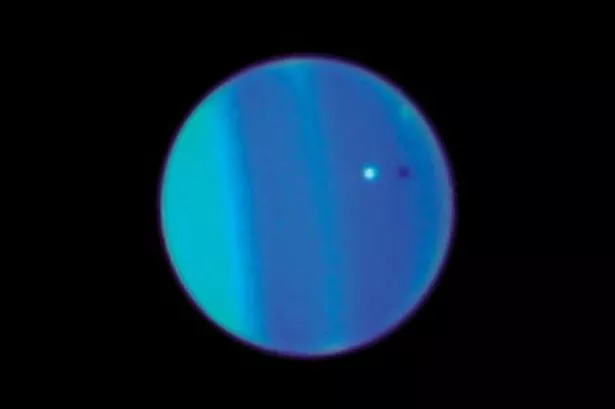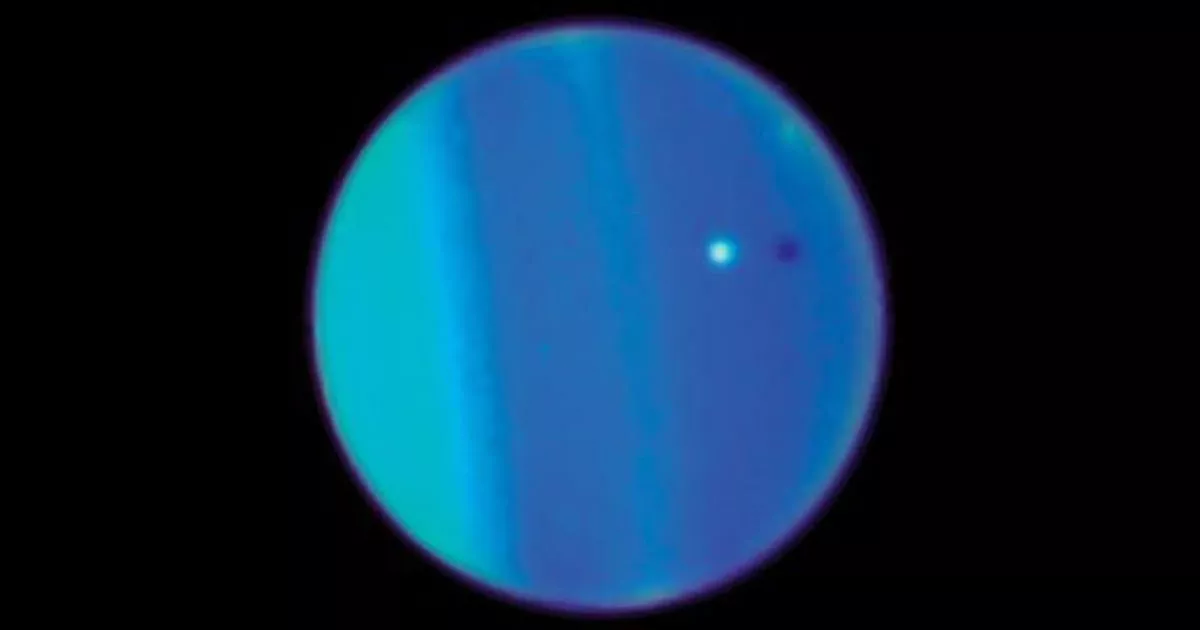New Nasa research has helped understand some of the mysteries surrounding the planet This 2006 image provided by NASA shows an image of Uranus with its moon (Image: AP)
This 2006 image provided by NASA shows an image of Uranus with its moon (Image: AP)
Scientists have made a new discovery about the planet of Uranus. For years, it was thought that Uranus was a distant star, it wasn’t until the late 18th century that Uranus was universally accepted as a planet.
New Nasa research has helped understand some of the mysteries surrounding the planet. Uranus is the seventh planet from the sun, and the third largest planet in our solar system, it is about four times wider than Earth. The planet is known for being cold and windy.
It is surrounded by faint rings, and more than two dozen small moons. It rotates at a nearly 90-degree angle from the plane of its orbit. This unique tilt makes Uranus appear to spin on its side.
Uranus has 28 known moons, including five major moons. Each is named after a Shakespeare character, giving them the nickname of “literary moons”.
Amy Simon, a planetary scientist at NASA’s Goddard Space Flight Centre in Greenbelt, Maryland, said: “Since Voyager 2’s flyby, everybody has said Uranus has no internal heat. But it’s been really hard to explain why that is, especially when compared with the other giant planets.”
She said “these Uranus projections came from only one up-close measurement of the planet’s emitted heat made by Voyager 2. Everything hinges on that one data point. That is part of the problem.”
NASA’s Voyager 2 Uranus flyby in 1986 also suggested the planet is unusually cold inside. Now, using an advanced computer modelling technique and revisiting decades of data, Simon and a team of scientists have found that Uranus does in fact generate some heat, as they reported on May 16 in the Monthly Notices of the Royal Astronomical Society journal.
A planet’s internal heat can be calculated by comparing the amount of energy it receives from the Sun to the amount of energy it releases into space in the form of reflected light and emitted heat.
The amount of heat a planet exudes could be an indication of its age: the less heat released relative to the heat absorbed from the Sun, the older the planet is.
Patrick Irwin, the paper’s lead author and professor of planetary physics at the University of Oxford in England, said: “We thought, could it really be that there is no internal heat at Uranus? We did many calculations to see how much sunshine is reflected by Uranus and we realised that it is actually more reflective than people had estimated.”
According to NASA, The researchers set out to determine Uranus’ full energy budget. This includes how much energy it receives from the Sun compared to how much it reflects as sunlight and how much it emits as heat. To do this, they needed to estimate the total amount of light reflected from the planet at all angles.
Oxford researchers developed a computer model that brought together everything known about Uranus’ atmosphere from decades of observations from ground- and space-based telescopes, including NASA’s Hubble Space Telescope and NASA’s Infrared Telescope Facility in Hawaii.
The researchers found that Uranus releases about 15% more energy than it receives from the Sun, a figure that is similar to another recent estimate from a separate study funded in part by NASA.
These studies suggest Uranus has its own heat. Simon said: “Now we have to understand what that remnant amount of heat at Uranus means, as well as get better measurements of it.”
